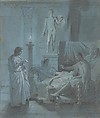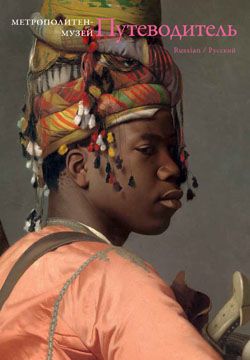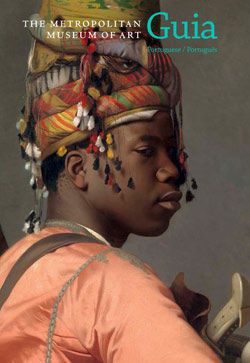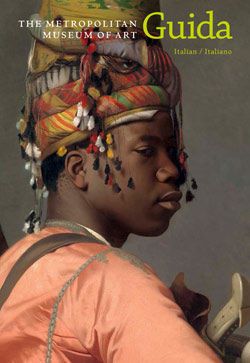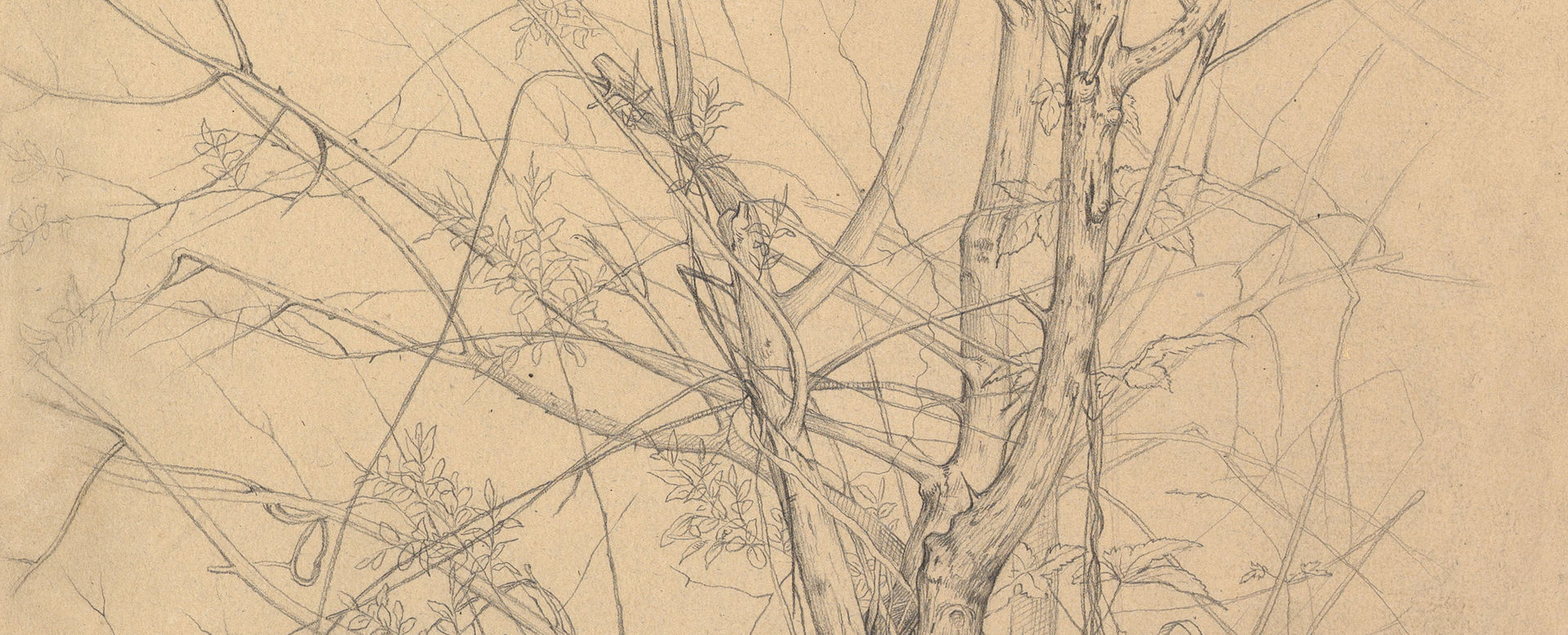Virgil Reading the Aeneid to Augustus, Livia, and Octavia
Jean Auguste Dominique Ingres French
Not on view
This recently discovered drawing depicts the dramatic story of Virgil reading the Aeneid to the Roman Emperor Augustus (r. 31 b.c.-a.d. 14), his wife Livia, and his sister Octavia. As the poet recites the words "Tu Marcellus eris" ("Marcellus you shall be"), he is abruptly halted by Augustus: Octavia has just fainted into the emperor's lap upon hearing the name of her dead son. Livia, who is believed to have commanded the murder of Marcellus, appears impassive, while Augustus' advisors, Marcus Agrippa and Gaius Maecenas, whisper suspiciously in the background. A nude statue of Marcellus presides over the nocturnal scene: illuminated by a flickering candle, it projects a ghostly shadow onto the wall at upper right. Marcellus was Augustus' nephew and adoptive son; when he died, Livia's son Tiberius became heir to the throne.
The drawing is a wonderful example of Ingres' romantic-classicist interpretation of scenes from antiquity, as it fuses archaeological exactitude with carefully calibrated emotional drama. Ingres used white chalk highlights throughout to illuminate and animate the figures and to direct the viewer's gaze within the scene. The beautiful blue paper further enhances the nocturnal lighting effects and lugubrious mood. A related canvas is in the Musée des Augustins, Toulouse; it was commissioned in 1811 by General Miollis, Napoléon I's French governor in Rome. Ingres would return to this subject throughout his career, reworking the composition in over one hundred drawings and three paintings.
Due to rights restrictions, this image cannot be enlarged, viewed at full screen, or downloaded.
